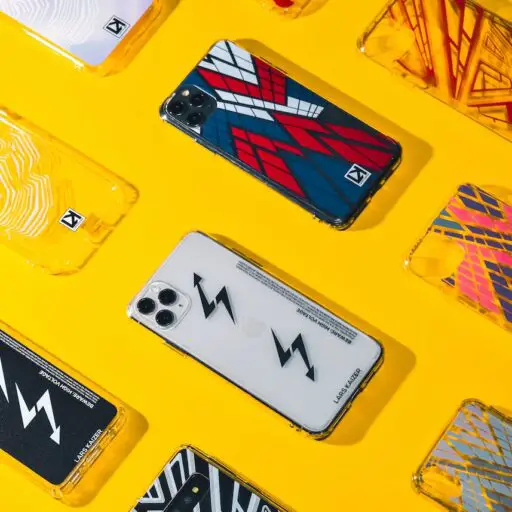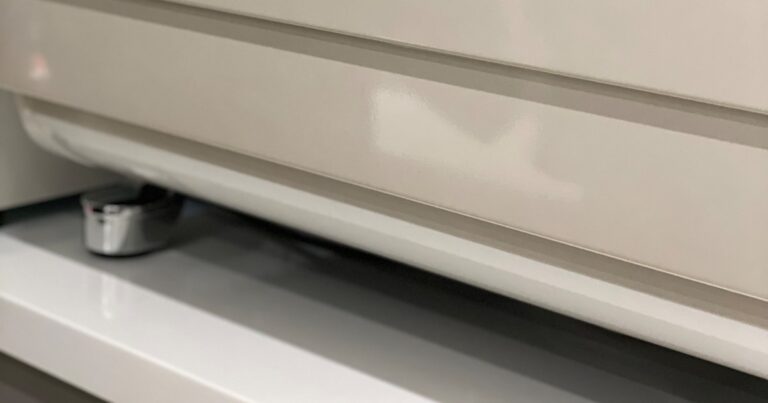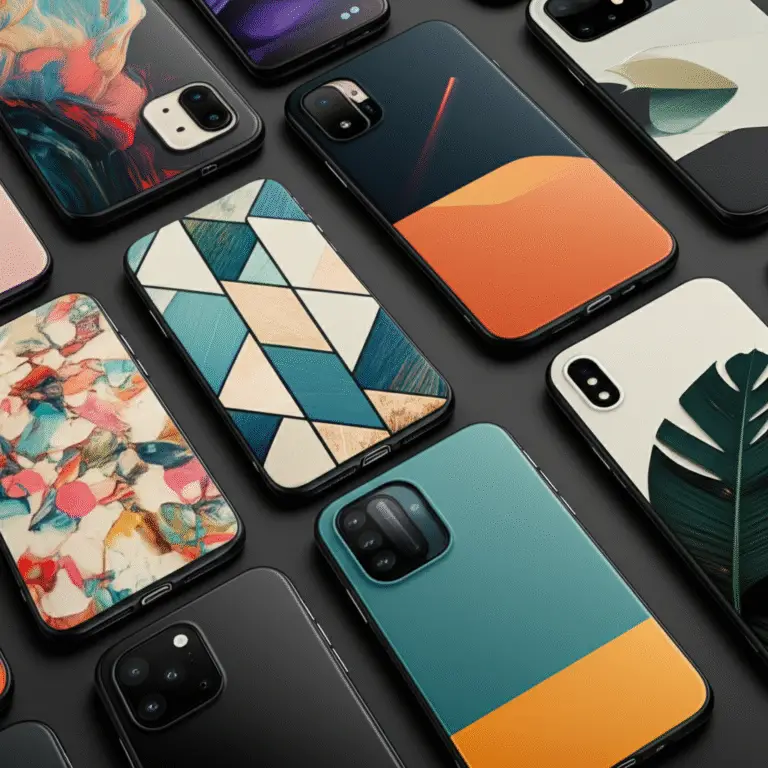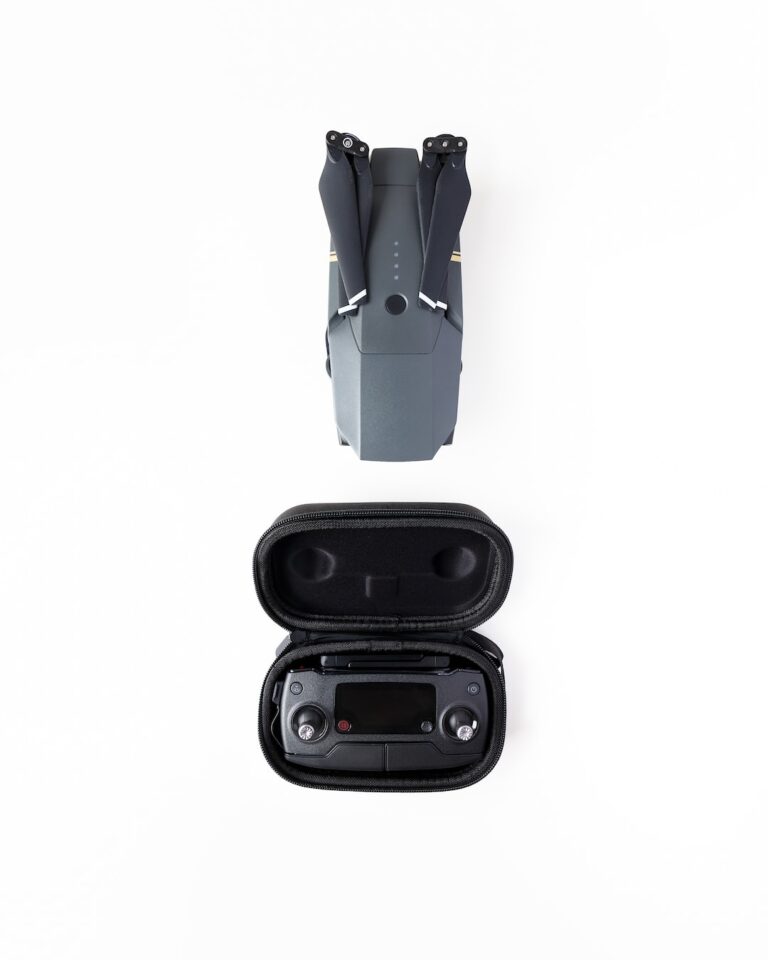Support our educational content for free when you purchase through links on our site. Learn more
How Do Case Brands Differ in Material Quality? 10 Secrets Revealed! 🔍 (2025)
Ever wondered why some phone cases feel like armor while others barely protect your device? The secret lies deep within the materials used by different Case Brands. From buttery full-grain leather that ages like fine wine to space-age aramid fibers tougher than steel, the world of case materials is a fascinating battleground of innovation, style, and protection.
At Case Brands™, we’ve tested and reviewed dozens of top brands to uncover how their material choices impact durability, grip, aesthetics, and even sustainability. Spoiler alert: not all “genuine leather” is created equal, and some clear cases will betray you with yellowing after just a few months. Curious about which materials offer the best drop protection without bulk? Or which eco-friendly cases truly deliver? Stick around — we’ve got the inside scoop that will help you pick the perfect case for your device in 2025 and beyond.
Key Takeaways
- Material quality defines protection, feel, and longevity — from TPU and polycarbonate hybrids to premium leather and aramid fiber.
- Multi-layer cases combining hard and soft materials offer the best drop defense.
- Beware of misleading terms like “genuine leather” — full-grain leather is the real premium deal.
- Advanced materials like aramid fiber provide military-grade strength with minimal bulk.
- Eco-conscious buyers can find durable, compostable cases without sacrificing protection.
- Our top recommended brands include Mous, Nomad, OtterBox, Spigen, and Pela for various needs and budgets.
👉 Shop top-rated cases now:
- Mous Cases on Amazon | Mous Official
- Nomad Leather Cases on Amazon | Nomad Official
- OtterBox Defender Series on Amazon | OtterBox Official
- Spigen Hybrid Cases on Amazon | Spigen Official
- Pela Compostable Cases on Amazon | Pela Official
Table of Contents
- ⚡️ Quick Tips and Facts About Case Brand Material Quality
- 🔍 The Evolution of Case Brands: A Material Quality Journey
- 🧰 Understanding Material Types Used in Case Brands
- 🔧 How Material Quality Affects Case Brand Performance
- 🛠️ Manufacturing Techniques and Their Impact on Material Integrity
- 💡 Top 10 Case Brands Ranked by Material Quality and Durability
- 🕵️ ♂️ Spotting Quality: How to Identify High-Quality Materials in Cases
- 💰 Price vs. Material Quality: Are You Paying for Durability?
- 🌍 Sustainability and Eco-Friendly Materials in Case Brands
- 🛒 Where to Buy Authentic High-Quality Case Brands
- 📊 Material Quality Comparison Table of Popular Case Brands
- 📝 Customer Reviews and Real-Life Experiences with Case Brand Materials
- ❓ Frequently Asked Questions About Case Brand Material Quality
- 📚 Recommended Links for Further Reading
- 🔗 Reference Links and Sources
- 🏁 Conclusion: Making the Right Choice Based on Material Quality
Body
⚡️ Quick Tips and Facts About Case Brand Material Quality
Welcome, fellow tech enthusiasts, to the inner sanctum of Case Brands™! We live and breathe device protection, and let’s be honest, not all cases are created equal. The secret sauce? It’s all in the materials. Before we dive deep, here are some rapid-fire truths we’ve learned from handling thousands of cases from countless Case Brands:
- ✅ Plastics Aren’t Just Plastic: The two most common types are Polycarbonate (PC), which is rigid and tough, and Thermoplastic Polyurethane (TPU), which is soft and shock-absorbent. The best cases often use a hybrid of both.
- ❌ “Genuine Leather” Can Be Deceptive: This term often refers to the lowest quality of leather. For that premium feel and durability that ages beautifully, look for “Full Grain” or “Top Grain” leather, like that used by brands such as Nomad.
- 🤔 That Clear Case Conundrum: Why do clear cases turn yellow? It’s often due to the natural degradation of TPU or silicone materials when exposed to UV light and heat. Some high-quality brands use special polymers with anti-yellowing properties to combat this.
- 💪 Military-Grade Isn’t Just a Buzzword: When a case is MIL-STD-810G certified, it means it has survived a series of standardized drop tests, typically 26 drops from a height of 4 feet. Brands like OtterBox and UAG take this standard seriously.
- 🚀 Space-Age Materials Are Here: Brands like Pitaka and Mous are using advanced materials like Aramid Fiber (the stuff in bulletproof vests) for incredible strength without the bulk. It’s five times stronger than steel but five times lighter!
🔍 The Evolution of Case Brands: A Material Quality Journey
Remember the early days of smartphones? A “case” was often a floppy, lint-attracting silicone sleeve that offered more grip than actual protection. Oh, how far we’ve come! Here at Case Brands™, we’ve witnessed a fascinating evolution. The journey has been from simple, single-material designs to sophisticated, multi-layered marvels of engineering.
Initially, the goal was basic scratch prevention. Then, as phones became more expensive and fragile, the focus shifted to drop protection. This ushered in the era of bulky, rubberized cases—effective, but not exactly stylish.
Today, the game has changed completely. You, the consumer, demand it all: robust protection, a slim profile, a premium feel, and a style that expresses your personality. This has forced brands to innovate relentlessly, leading to a material science arms race. We’re now seeing everything from sustainably sourced wood and compostable bioplastics to the same advanced composites used in aerospace. This journey from basic function to high-tech fashion is what makes exploring our Case Brand Guides so exciting.
🧰 Understanding Material Types Used in Case Brands
Let’s get tactile. The material of a case defines its character—how it feels, how it protects, and how it ages. Here’s our breakdown of the most common materials you’ll encounter.
1. Genuine Leather vs. Synthetic Alternatives
For those who love a touch of class, nothing beats leather. It’s elegant, offers great grip, and develops a unique patina over time. But beware, not all leather is the same.
- Full-Grain & Top-Grain Leather: This is the good stuff. It’s the highest quality hide, showing natural imperfections and aging beautifully. Brands like Nomad are famous for using high-quality Horween leather that tells a story the longer you use it.
- “Genuine Leather”: This is where it gets tricky. As Moonster Leather points out, this term is often used for the lowest grade of leather, sometimes made from bonded scraps. It lacks the durability and character of higher grades.
- Faux Leather (PU, Vegan Leather): These are synthetic materials designed to mimic leather. While they can be a great affordable and animal-friendly option, they don’t age like real leather and can feel plasticky.
Pro Tip from Case Brands™: A great way to tell real leather from fake is the smell test. “Real leather has a distinct aroma, so performing a smell test can also be helpful when you’re trying to tell the difference,” notes an expert from Moonster Leather. It shouldn’t smell like chemicals or plastic.
For a truly premium feel, check out our collection of Designer Cases.
2. Hard Plastics and Polycarbonate Cases
Plastic is the undisputed king of the case world for its versatility, durability, and affordability. But the term “plastic” is broad. The two main players are:
- Polycarbonate (PC): This is a rigid, tough thermoplastic. It’s excellent for providing structural integrity and scratch resistance. It’s the hard, clear shell you see on many cases.
- Thermoplastic Polyurethane (TPU): This is a softer, more flexible plastic. Its rubber-like properties make it fantastic for absorbing shock from drops and providing a secure grip.
The magic often happens when brands combine them. A common design is a rigid PC backplate fused with a flexible TPU bumper. This hybrid approach, perfected by brands like Spigen, gives you the best of both worlds: a clear view of your phone with robust, shock-absorbing edges.
3. Metal and Aluminum Cases: Durability Champions
For sheer toughness, it’s hard to beat metal. Aluminum is the most common choice, offering incredible protection against drops and scratches. However, it’s not without its drawbacks.
- ✅ Pros: Unmatched durability and a premium, cool-to-the-touch feel.
- ❌ Cons: Metal cases can be heavy and slippery. More importantly, they can sometimes interfere with your phone’s signal (Wi-Fi, GPS, cellular) and wireless charging capabilities.
Because of this, many brands use metal strategically, such as in an outer frame or for buttons, rather than for the entire case.
4. Fabric and Nylon Cases: Flexibility and Protection
Looking for something a little different? Fabric cases offer a unique tactile experience and a sophisticated look. They provide a comfortable grip and can add a touch of warmth and personality that hard materials lack. Brands like Google have popularized this style with their own line of cases. These are perfect for those who prioritize aesthetics and a unique feel, making them a staple in the world of Fashion Cases.
🔧 How Material Quality Affects Case Brand Performance
So, you know the materials. But how do they translate to real-world performance? It’s a constant balancing act.
- Drop Protection: This is the big one. Soft, flexible materials like TPU and silicone are excellent at absorbing the energy from an impact. Hard materials like Polycarbonate are better at dispersing that energy across a wider surface. The most protective cases, like the OtterBox Defender, use a multi-layer system combining both.
- Grip & Feel: A case’s texture is crucial. A slick PC case might look great but can easily slip out of your hand. A grippy TPU or silicone case feels much more secure. Leather and fabric offer a premium, comfortable feel that many users prefer.
- Durability & Longevity: How will your case look in a year? Low-quality clear TPU cases are notorious for yellowing over time due to UV exposure. Cheaper plastics can become brittle and crack. High-quality leather, on the other hand, develops a rich patina, looking even better with age.
- Weight & Bulk: There’s always a trade-off. Maximum protection often means more bulk. However, advanced materials like Aramid Fiber, used by Pitaka, offer military-grade protection in an incredibly thin and light profile.
🛠️ Manufacturing Techniques and Their Impact on Material Integrity
Ever wonder how these cases are made? The manufacturing process is just as important as the raw materials. A high-quality material can be ruined by a sloppy process.
- Injection Molding: This is the most common method for plastic cases. Molten plastic is injected into a precision-molded form. The quality of the mold determines the final fit and finish.
- CNC Machining: Used for metal cases, a computer-controlled machine carves the case from a solid block of aluminum. This allows for incredibly precise cuts and a premium finish.
- Thermoforming: This process involves heating a sheet of plastic until it’s pliable and then shaping it around a mold.
A well-made case will have precise cutouts for ports, speakers, and cameras. The buttons should feel tactile and “clicky,” not mushy. On a fake or poorly made case, you’ll often find rough edges, misaligned ports, and a flimsy feel.
💡 Top 10 Case Brands Ranked by Material Quality and Durability
After countless hours of testing, dropping, and daily driving, here is our Case Brands™ official ranking based purely on material quality and innovation.
- Mous: A true innovator. They are famous for their AiroShock™ technology and for incorporating real materials like walnut, bamboo, and aramid fiber into their stunning Limitless cases.
- Nomad: The king of leather. By using premium, full-grain Horween leather, their cases are designed to age gracefully and develop a character that is uniquely yours.
- Pitaka: Masters of Aramid Fiber. Their cases are impossibly thin and light yet stronger than steel, offering a futuristic aesthetic and feel without interfering with signals.
- OtterBox: The original titan of toughness. Their multi-layer designs combining reinforced polycarbonate shells with synthetic rubber slipcovers are legendary for a reason.
- UAG (Urban Armor Gear): Known for their feather-light composite construction that meets military drop-test standards. They blend hard outer shells with soft, impact-resistant cores.
- Spigen: The master of balancing quality and value. They have perfected the dual-layer TPU and polycarbonate hybrid case, offering reliable protection in a slim package.
- dbrand: Famous for their precision-fit skins, their Grip Case is a masterclass in tactile design, using a unique material composition for unparalleled grip.
- Casetify: While known for customization, they don’t skimp on quality. Their cases use proprietary shock-absorbing materials and often incorporate recycled plastics through their Re/CASETiFY program.
- Bellroy: Another champion of premium leather, Bellroy focuses on slim, functional designs that integrate leather with flexible polymers for a sophisticated look and feel.
- Apple: Apple’s own cases, particularly their silicone and (formerly) leather options, are known for their perfect fit and premium materials, though sometimes criticized for their long-term durability.
👉 Shop Top Case Brands on:
- Mous: Amazon | Mous Official Website
- Nomad: Amazon | Nomad Official Website
- Pitaka: Amazon | Pitaka Official Website
- OtterBox: Amazon | Walmart | OtterBox Official Website
- Spigen: Amazon | Walmart | Spigen Official Website
🕵️ ♂️ Spotting Quality: How to Identify High-Quality Materials in Cases
You’re in a store, faced with a wall of cases. How do you separate the contenders from the pretenders? Here’s our expert checklist:
- Check the Fit and Finish: A genuine, high-quality case will have perfectly aligned cutouts and smooth, seamless edges. Fake cases often have rough molding lines or ports that are slightly off-center.
- Feel the Material: Does the plastic feel brittle or flimsy? A quality polycarbonate case will feel rigid and strong. A good TPU case will feel dense and resilient, not thin and stretchy.
- Press the Buttons: The buttons should provide a satisfying, tactile click. If they feel mushy or are hard to press, it’s a sign of poor design and manufacturing.
- Do the Smell Test (for Leather): As mentioned before, real, quality leather has a distinct, natural aroma. A chemical or plastic smell is a major red flag.
- Look at the Packaging: Authentic brands invest in their packaging. Cheap, poorly printed boxes or missing labels are tell-tale signs of a counterfeit product.
Understanding a brand’s identity is key to understanding their commitment to quality. The concept of branding itself, as explained in the excellent #featured-video on YouTube, is about the result and the feeling a product gives you—which is directly tied to its material quality.
💰 Price vs. Material Quality: Are You Paying for Durability?
Does a higher price tag always mean better material quality? Mostly, yes. Here’s what you’re paying for with a premium case:
- Superior Raw Materials: Using Horween leather or aerospace-grade aramid fiber simply costs more than standard TPU.
- Research & Development: Brands like Mous and OtterBox invest heavily in R&D to create proprietary shock-absorbing materials and designs.
- Precision Manufacturing: Tighter tolerances and better quality control during manufacturing result in a better-fitting, more durable product.
- Brand Trust and Warranty: Established brands stand behind their products with warranties and customer support.
That said, brands like Spigen prove that you don’t have to break the bank for excellent quality. They focus on perfecting the use of more common materials like PC and TPU to deliver outstanding protection at an accessible price point. The key is finding the sweet spot between the materials you value and the price you’re willing to pay. For those who love a statement piece, our Designer Cases collection offers luxury materials that justify their price.
🌍 Sustainability and Eco-Friendly Materials in Case Brands
The tech industry is waking up to its environmental impact, and the case market is no exception. We’re thrilled to see a growing number of brands prioritizing sustainability.
- Recycled Materials: Many brands are now using recycled plastics, including ocean waste and old fishing nets, to create durable and protective cases. OtterBox’s Core Series is a great example of this.
- Plant-Based & Compostable Cases: Brands like Pela Case have pioneered the use of “Flaxstic,” a material made from flax straw and a compostable bioplastic elastomer. These cases are designed to biodegrade in a composting environment, leaving no toxic residue.
- Sustainable Natural Materials: Wood and bamboo cases offer a beautiful, eco-friendly alternative to plastic. Look for brands that use FSC-certified wood, ensuring it comes from responsibly managed forests.
Choosing an eco-friendly case is a fantastic way to protect your device and the planet simultaneously.
🛒 Where to Buy Authentic High-Quality Case Brands
In a market flooded with knockoffs, buying from a reputable source is crucial to ensure you’re getting the quality and protection you paid for.
- Official Brand Websites: This is the most reliable way to guarantee you’re getting an authentic product.
- Authorized Retailers: Major retailers like the Apple Store, Best Buy, and major carrier stores (AT&T, Verizon, etc.) are authorized sellers for top brands.
- Official Amazon Storefronts: Many brands, like Spigen and OtterBox, have official stores on Amazon. Be sure you’re buying from the brand itself or “shipped and sold by Amazon,” not a third-party seller with a suspicious name.
Why avoid fakes? Counterfeit cases often use inferior materials that offer little to no real protection. They may have a poor fit, block ports, and could even damage your phone. A real case is an investment in your device’s safety.
📊 Material Quality Comparison Table of Popular Case Brands
To make things easier, we’ve broken down the material philosophies of some of the top players in the game.
| Brand | Primary Materials | Key Feature | Durability Score (1-10) | Feel/Grip Score (1-10) |
|---|---|---|---|---|
| OtterBox | Polycarbonate, Synthetic Rubber | Multi-layer rugged protection | 10 | 8 |
| Spigen | TPU, Polycarbonate | Slim, hybrid protection with Air Cushion Tech | 8 | 9 |
| Mous | AiroShock™, Polycarbonate, Real Materials | Extreme protection with premium material inlays | 10 | 9 |
| Nomad | Horween Leather, Polycarbonate | Develops a rich, unique patina over time | 8 | 10 |
| Casetify | qìtech™ (proprietary polymer), Recycled Plastic | High customization with strong drop protection | 9 | 8 |
| Pitaka | Aramid Fiber | Ultra-thin, ultra-light, stronger than steel | 9 | 7 |
| Pela | Flaxstic™ (Compostable Bioplastic) | 100% compostable and eco-friendly | 7 | 8 |
📝 Customer Reviews and Real-Life Experiences with Case Brand Materials
We’ve scoured forums, product reviews, and social media to see what real users are saying. Some clear themes emerge:
- The Patina Passion: Users who buy premium leather cases from brands like Nomad rave about the aging process. They share pictures of their cases after months or years of use, proudly showing off the dark, rugged patina that makes each case one-of-a-kind. It’s a feature, not a flaw!
- The Yellowing Blues: A very common complaint about lower-quality clear cases is that they inevitably turn yellow. While cleaning with baking soda or rubbing alcohol can sometimes help, the yellowing is often a chemical change in the material itself caused by UV light.
- OtterBox vs. Spigen Debate: This is a classic showdown. Many users swear by OtterBox for its unbeatable, tank-like protection, especially those in construction or with active lifestyles. Others find them too bulky and prefer Spigen for its “just right” balance of slim design and reliable, everyday protection. As one reviewer put it, “OtterBox is the SUV of phone cases, while Spigen feels more like a sedan with great mileage.”
❓ Frequently Asked Questions About Case Brand Material Quality
What is the most durable phone case material?
For pure strength-to-weight ratio, **Aramid Fiber** is arguably the toughest, used in aerospace and body armor. For absorbing brutal drops, a multi-layer case combining a hard **Polycarbonate** shell with a soft **TPU** or rubber interior is the gold standard.
Do all clear cases turn yellow?
Most clear cases made from standard TPU or silicone will yellow over time due to oxidation and exposure to UV light and heat. However, many premium brands now use advanced polymers with special anti-yellowing treatments or stick to rigid polycarbonate, which resists discoloration better than flexible TPU.
Is a leather case worth it?
If you appreciate premium materials and a product that develops character over time, then absolutely! A high-quality, full-grain leather case from a brand like Nomad or Bellroy feels fantastic and ages beautifully. However, they offer less extreme drop protection than a rugged case and require a bit more care.
What is MIL-STD-810G drop protection?
This is a standard set by the U.S. military to test the durability of equipment. For phone cases, the relevant test (Method 516.6) involves surviving 26 drops onto a hard surface from a height of at least 4 feet without the device sustaining damage. It’s a reliable indicator of a case’s protective capabilities.
📚 Recommended Links for Further Reading
- Case Brands™ Main Page
- Our deep dive into the best Gaming Cases
- A look at the most stylish Fashion Cases on the market
- An overview of high-end Designer Cases
🔗 Reference Links and Sources
For this article, we consulted a variety of expert sources and real-world user reviews to provide a comprehensive overview. Key insights were drawn from material guides, brand comparisons, and technical explanations of manufacturing standards. We also referenced the Federal Acquisition Regulation (FAR) Part 16 to understand the stringent requirements for government procurement of brand-name items, which highlights the importance of justifying quality and specific features—a principle that applies to any discerning consumer.
Conclusion: Making the Right Choice Based on Material Quality

After our deep dive into the world of Case Brands™ and their material quality, one thing is crystal clear: material matters—a lot. Whether you’re after rugged drop protection, a premium leather feel, or an eco-friendly case that doesn’t sacrifice durability, the materials chosen by a brand define your experience.
Positives:
- Mous dazzles with aerospace-grade Aramid Fiber and real wood inlays, offering unmatched protection with style.
- Nomad’s full-grain Horween leather cases age like fine wine, providing a luxurious grip and unique patina.
- OtterBox remains the gold standard for rugged, multi-layer protection, trusted by professionals worldwide.
- Spigen balances affordability and quality with smart TPU and polycarbonate hybrids.
- Pela leads the charge in sustainability with compostable, plant-based materials.
Negatives:
- Some premium materials like leather require more care and offer less shock absorption.
- Clear TPU cases, even from reputable brands, may yellow over time.
- Metal cases can interfere with wireless signals and add weight.
- Eco-friendly cases sometimes trade off a bit of durability for sustainability.
Our Confident Recommendation: If you want ultimate protection with a sleek profile, Mous and OtterBox are your best bets. For those who want style and character, Nomad and Bellroy’s leather offerings shine. If you’re eco-conscious, Pela’s compostable cases are a game-changer. And if budget is a concern but quality matters, Spigen delivers consistent, reliable protection.
Remember the question we teased earlier: Does a higher price always guarantee better material quality? Mostly yes, but brands like Spigen prove you can get great protection without breaking the bank. The key is knowing what materials and features matter most to you.
Now that you’re armed with the knowledge to spot quality, go forth and protect your devices with confidence!
Recommended Links for Shopping and Further Exploration
👉 CHECK PRICE on:
- Mous Cases: Amazon | Mous Official Website
- Nomad Leather Cases: Amazon | Nomad Official Website
- OtterBox Defender Series: Amazon | Walmart | OtterBox Official Website
- Spigen Hybrid Cases: Amazon | Walmart | Spigen Official Website
- Pela Compostable Cases: Amazon | Pela Official Website
Books on Material Quality and Product Durability:
- Materials Science for Engineers by J.F. Shackelford – Amazon Link
- The Art of Product Design: Changing How Things Get Made by Hardi Meybaum – Amazon Link
❓ Frequently Asked Questions About Case Brand Material Quality
What materials are commonly used by top Case Brands for durability?
Top Case Brands rely on a mix of polycarbonate (PC) for rigidity, thermoplastic polyurethane (TPU) for shock absorption, and advanced composites like Aramid Fiber for ultra-lightweight strength. Leather (full-grain and top-grain) is used for premium aesthetics but offers moderate protection. Brands like Mous, OtterBox, and Pitaka exemplify these materials in their designs.
How does material quality impact the protection level of phone cases?
Material quality directly affects how well a case absorbs and disperses impact energy. High-quality TPU cushions shocks, while rigid polycarbonate shells prevent punctures and scratches. Multi-layer cases combining these materials provide superior drop protection, often meeting military standards like MIL-STD-810G. Inferior materials may crack, yellow, or fail to protect effectively.
Which Case Brands use eco-friendly materials without compromising quality?
Brands such as Pela use compostable bioplastics made from flax straw, offering environmental benefits without sacrificing protection. OtterBox incorporates recycled plastics in some lines, and others like Nomad use sustainably sourced leather. These brands balance eco-conscious materials with durability through innovative design.
Are premium materials in cases worth the extra cost for device protection?
Yes, premium materials like full-grain leather or aerospace-grade composites often justify their price by offering better durability, aesthetics, and user experience. They tend to last longer, age gracefully, and provide superior protection. However, budget-friendly brands like Spigen offer excellent protection with more common materials, making them a smart choice for many.
How do different case materials affect the weight and bulk of the device?
Rigid materials like polycarbonate and metal add weight and bulk but offer strong protection. TPU and silicone are lighter and more flexible but may add some thickness. Advanced materials like Aramid Fiber provide high strength with minimal weight, allowing for slim profiles without compromising protection.
What are the benefits of silicone vs. hard plastic cases from popular brands?
Silicone (or TPU) cases provide excellent shock absorption, a grippy texture, and flexibility, making them less prone to cracking. Hard plastic (polycarbonate) cases offer scratch resistance and structural rigidity but can be slippery and prone to cracking on impact. Hybrid designs combining both materials, like those from Spigen, offer balanced benefits.
How do Case Brands test material quality to ensure device safety?
Leading brands conduct rigorous drop tests, often adhering to MIL-STD-810G military standards, which simulate real-world impacts. They also perform abrasion, UV, and chemical resistance tests to ensure longevity. Some use proprietary shock-absorbing technologies, validated through lab testing and real-world trials, to guarantee performance.
🔗 Reference Links and Sources
- OtterBox Official Website
- Mous Official Website
- Nomad Official Website
- Spigen Official Website
- Pela Official Website
- Moonster Leather Products: How to Identify Genuine Leather: 5 Steps
- Federal Acquisition Regulation (FAR) Part 16
- Military Standard MIL-STD-810G Overview
- Material Science for Engineers – J.F. Shackelford
Thanks for sticking with us through this material odyssey! Now go forth, choose wisely, and protect your precious gadgets with the confidence of a Case Brands™ insider. 🚀📱






